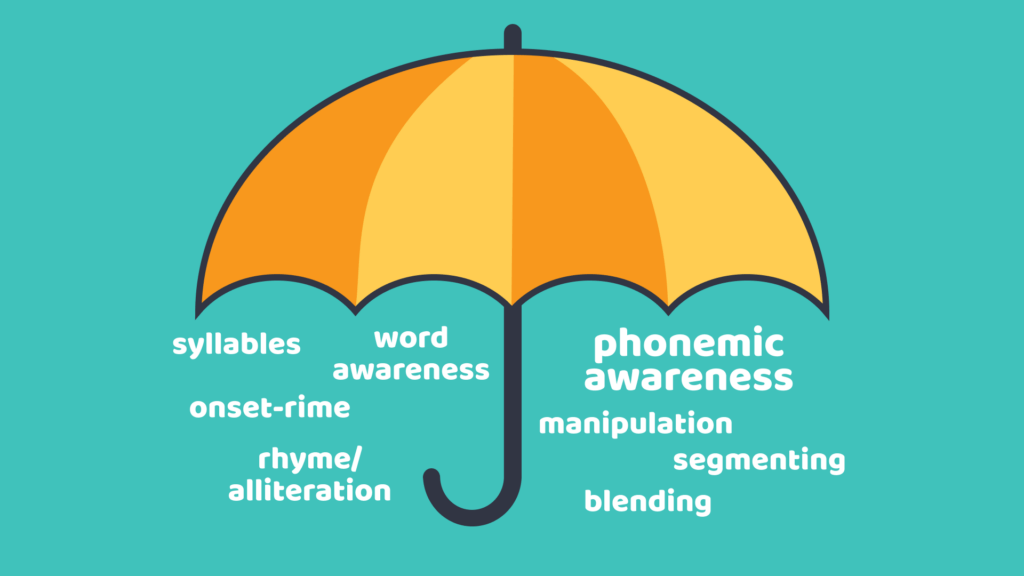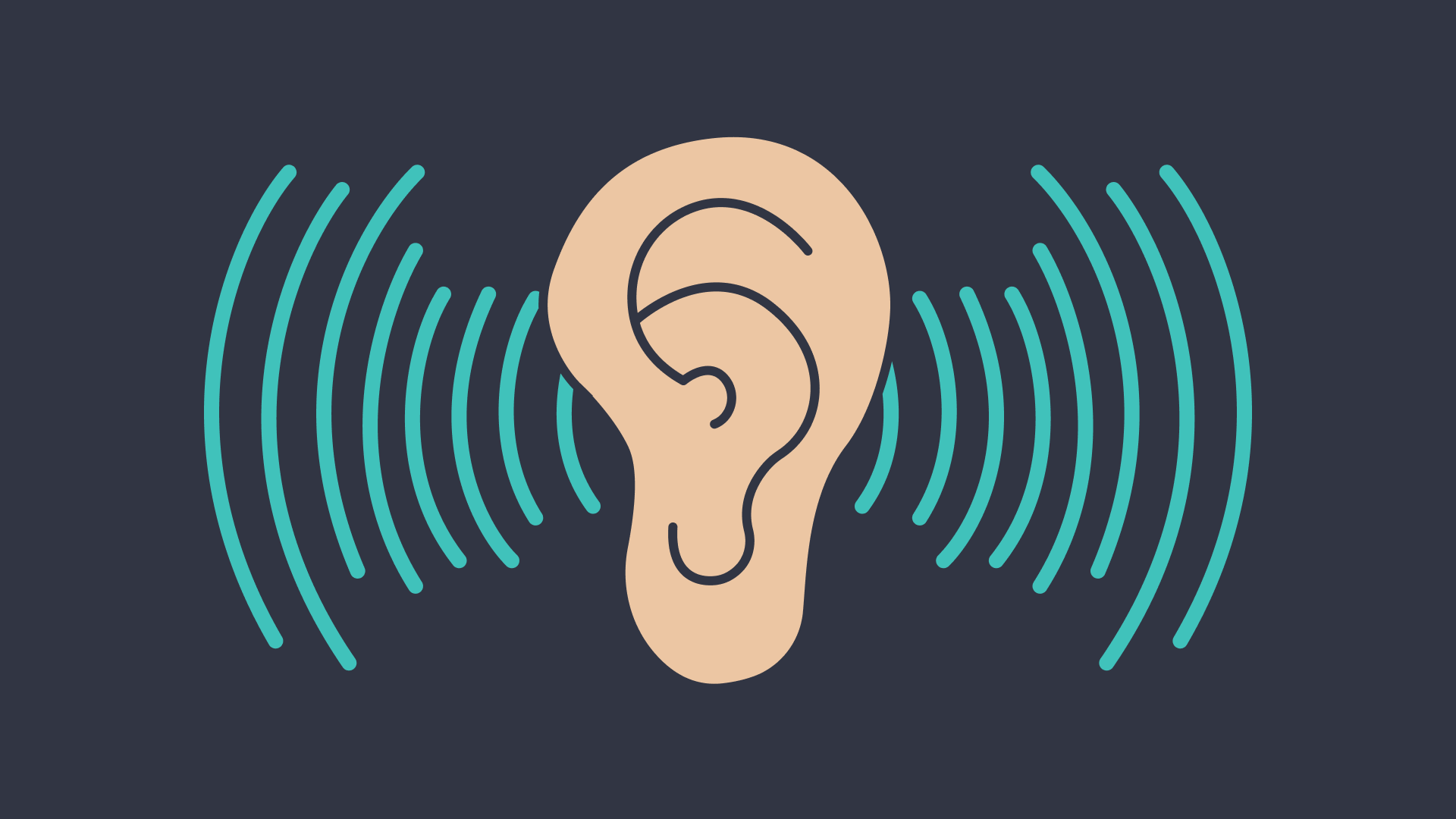Phonological awareness vs phonemic awareness – what’s the difference?
In this guide
What is phonological awareness?
Phonological awareness refers to one’s ability to work with sounds in a spoken language. A student who is phonologically aware is able to recognize that words are made up of smaller sounds which are strung together into a longer word. This ability usually begins developing in early childhood, and continues to develop through elementary age.
If you’re a 90’s kid like me, you’ll probably remember the commercials that aired on tv for Hooked on Phonics, which promised parents that their system would teach their kids to read in no time. Hooked on Phonics, whose slogan was “from frustrated to fantastic reader in just 15 minutes a day”, utilized the science behind phonological awareness to help children develop their reading skills.

So, what does learning through phonics look like? Here are some example activities that promote phonological awareness:
Phonological awareness activities
1) Rhyming words
Present a word to your students and ask them for words that rhyme with it. For example: bat, cat, rat, mat, fat, etc.
2) Word scramble
Scramble some short three or four letter words. Ask your students to put the letters in the correct order to form a word.
3) Letter swap
Write a short word on a chalk or white board. Ask students to come up and replace one letter to form a new word. Continue until your students are unable to come up with any more (ex = pot becomes rot, rot becomes rat, rat becomes sat, etc.)
4) Word bingo
Create, or have your students create, bingo cards with short words in the boxes. Say aloud the words in a random order and have your students mark off the words as they hear them. First one to form a line wins!
5) Alliteration
Challenge your students to make sentences out of words that begin with the same letter. Ex: Cute cat craves cuddles. Refer to the alliteration video on ClickView.
6) Educational videos
Check out some of our helpful videos to share with your students that will help you explore some more letter sounds.
What is phonemic awareness?

Phonemic awareness is a subset of phonological awareness. It refers to the ability to hear, identify, and manipulate the individual sounds – phonemes – within a word. For example, someone with phonemic awareness would be able to identify the individual sounds of “c”, “a”, and “t” that make up the word cat.
Phonemic awareness activities
1) Counting sounds
Have your students count the number of sounds within a word. This can be done verbally, or by clapping or stomping with each new syllable.
2) Tracing letters
Using their fingertips, students trace a letter or small grouping of letters while making its corresponding sound aloud.
3) Letter I Spy
Choose a letter and have your students find things around the classroom that begin with the same letter. Be sure to emphasize the sound it makes.
4) Letter labels
Post images around the room of various foods, animals, colors, etc. Give your students sticky-notes with a letter on them, and ask them to stick the letter to the corresponding image (O for Owl)
5) Spelling challenge
Ask your students to come up with as many words as they can think of that start with a specific sound. Consider putting them in small groups and making it a race!
6) Phoneme detective
Pair your students up. Assign one the job of ‘segmenter’ – they’ll provide the phonemes in a word. The other student – the blender – will blend the phonemes together to guess the correct word.
How do they differ?
Honestly, very little! Some teachers tend to use the terms phonological and phonemic awareness interchangeably, but there are some key differences. Basically, phonemic awareness is specifically about phonemes – the tiny sounds contained in a word instead of the entire word. The sounds phonemes make cannot be broken down any further.
Phonemic awareness is much more specific than phonological. While phonological awareness involves big picture language ideas like rhyming, alliteration, and identifying syllables, phonemic awareness is about manipulating, blending, and segmenting the sounds within a word. Phonemic awareness is usually learned after phonological as students begin to break down the challenges involved in reading further.
Phonological awareness vs phonemic awareness examples

Here’s an example of word manipulation to break down the key differences between the two. Let’s use the word ‘cat’:
Phonological awareness example
- Syllable:
- 1 syllable – cat
- Rhymes with:
- rat, sat, mat
- Audible parts:
- c-at
- Alliteration:
- cute cat
Phonemic awareness example
- Phoneme identification:
- Made up of 3 sounds: /c/ – /a/ – /t/
- Phoneme deletion and substitution (initial):
- Take away /c/ and replace with /r/: rat
- Phoneme deletion and substitution (final):
- Take away /t/ and replace with /g/: rag
- Phoneme addition:
- Add /s/ to rag: rags
So, while phonemic awareness lives under the larger umbrella of phonological awareness, there are some key differences between the two. Students early on in their journey to becoming readers will initially need to master their phonological awareness in order to begin identifying words.
Once they’ve got the word part down, they’re then ready to break them down further and begin manipulating sounds to be able to understand and form more complicated language. Luckily, there are plenty of fun activities to help your students – and you – along the way!
References
- Ericson, L. and Moira Fraser Juliebö (1998). The phonological awareness handbook for kindergarten and primary teachers. Newark, Del.: International Reading Association.
- Fredericks, A.D. (2001). The Complete Phonemic Awareness Handbook K-2. Rigby.
- Gillon, G.T. (2018). Phonological awareness: from research to practice. New York ; London: The Guilford Press, Cop.
- Hiebert, E.H. and Teachers College Press (2020). Teaching words and how they work : small changes for big vocabulary results. New York: Teachers College Press.
- Massachusetts Department of Elementary and Secondary Education (2021). Skills for Early Reading: Phonological Awareness – Evidence Based Early Literacy. [online] www.doe.mass.edu. Available at: https://www.doe.mass.edu/massliteracy/skilled-reading/fluent-word-reading/phonological-awareness.html.
- National Center on Improving Literacy. (2022). Phonological Awareness: What is it and how does it relate to phonemic awareness? [online] Available at: https://improvingliteracy.org/brief/phonological-awareness-what-it-and-how-does-it-relate-phonemic-awareness/index.html.
- National Reading Panel (2000). Teaching Children to Read. American Speech, [online] 88(1), pp.3–6. doi:https://doi.org/10.1215/00031283-2322610.
- Pearson, Barr, R., Kamil, M.L. and Mosenthal, P. (1984). Handbook of Reading Research. New York: Longman.
- Snowling, Margaret, and Charles Hulme (1994). “The Development of Phonological Skills.” Philosophical Transactions: Biological Sciences, pp. 21–27. JSTOR, http://www.jstor.org/stable/56015.
- Torgesen, J.K. and Mathes, P.G. (2000). A Basic Guide to Understanding, Assessing, and Teaching Phonological Awareness.
- Yopp, H.K. and Yopp, R.H. (2000). Supporting Phonemic Awareness Development in the Classroom. The Reading Teacher, 54(2), pp.130–143. doi:https://doi.org/10.1598/rt.54.2.2.
- Yopp, H. K., & Yopp, R. H. (2009). Phonological Awareness Is Child’s Play! YC Young Children, 64(1), 12–21. http://www.jstor.org/stable/42731019.

Jessica Pastore
briefcase iconMuseum Educator
Jessica Pastore is a museum educator living and working in New York City. Her background is in social studies education and world history. She has taught in both classroom and gallery settings for the past ten years.
Other posts
Want more content like this?
Subscribe for blog updates, monthly video releases, trending topics, and exclusive content delivered straight to your inbox.













